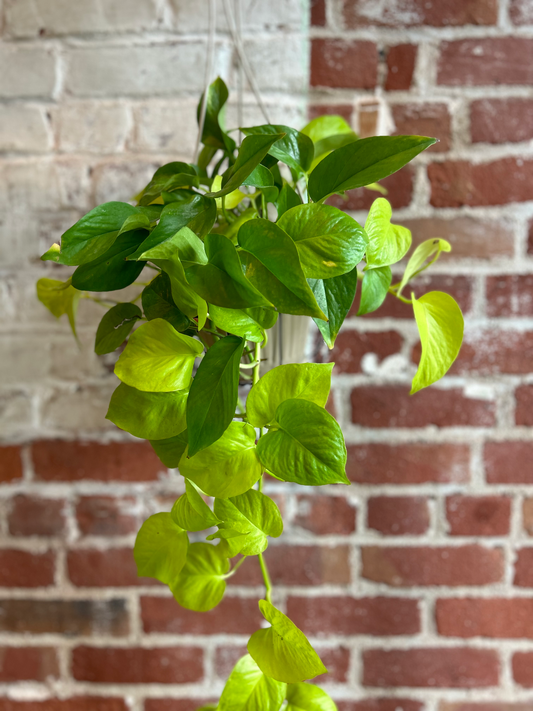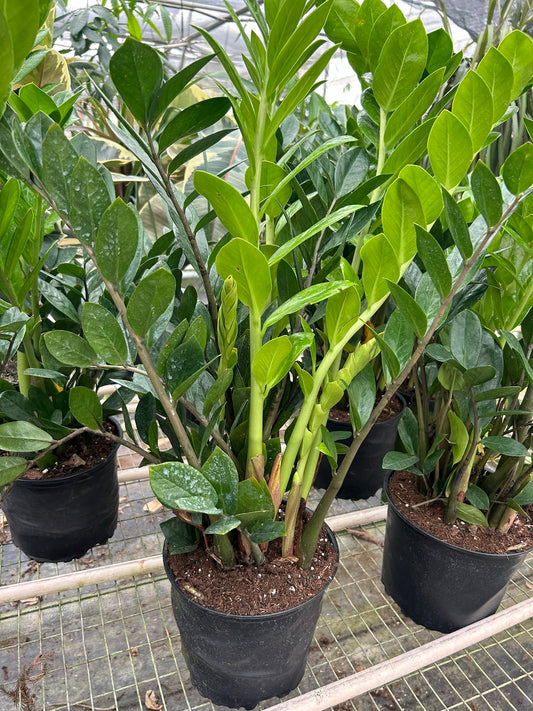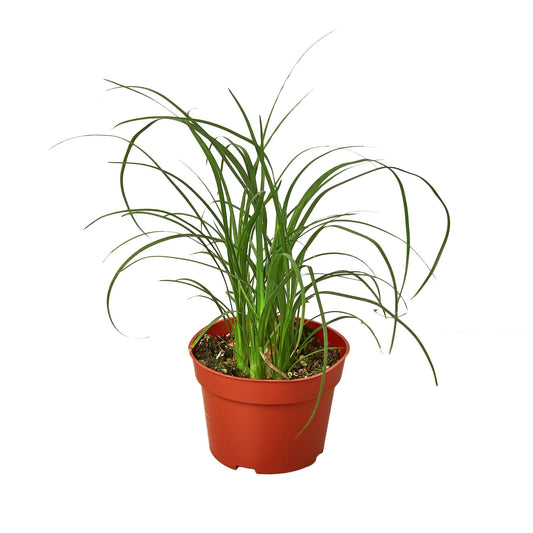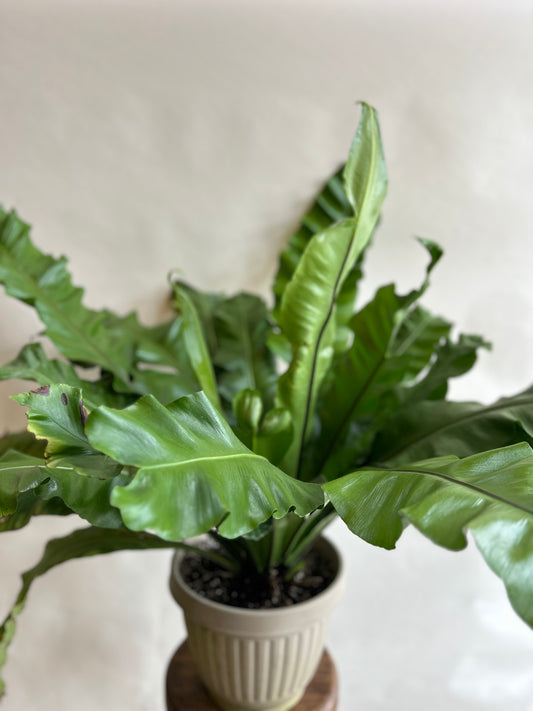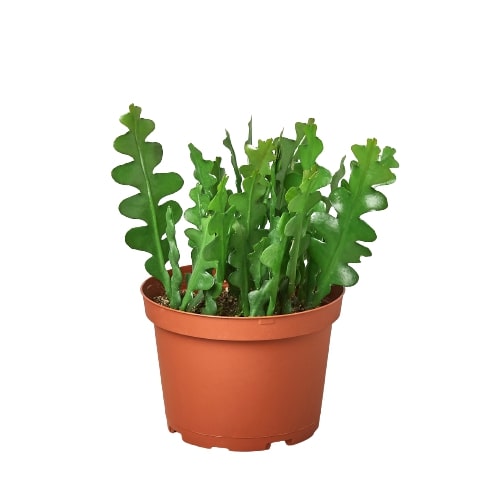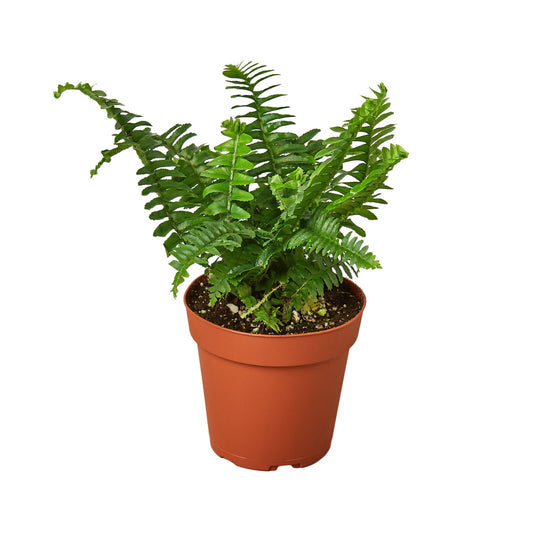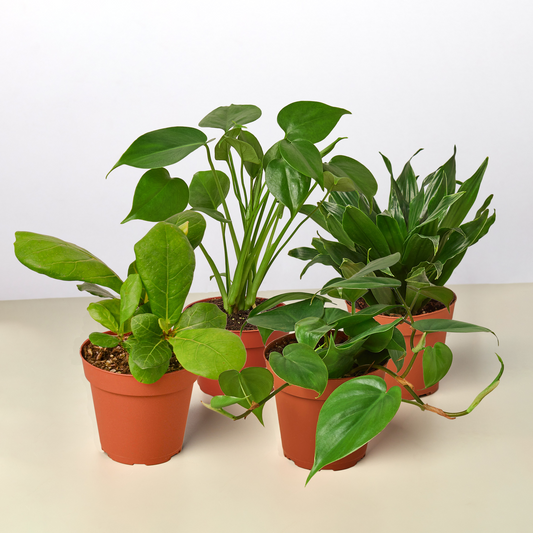How to Grow a European Fan Palm From Seed
Cafe Planta Team
Growing a European Fan Palm from seed is like embarking on a little botanical adventure right in your living room. This charming palm, with its elegant fan-shaped leaves, can add a bit of Mediterranean flair to your home. But how do you go from a tiny seed to a lush plant? Let's walk through the process together.
In this article, we’ll cover everything you need to know about growing European Fan Palms from seeds. From selecting the right seeds to caring for your young palm, we’ll explore each step in detail. By the end, you'll have the confidence and know-how to start your own palm-growing journey.
Choosing the Right Seeds
First things first, you need to get your hands on some quality European Fan Palm seeds. Not all seeds are created equal, and the success of your palm-growing project starts with choosing the right ones. You can find seeds online or at local garden centers, but keep an eye out for freshness. Seeds that are too old might not germinate well.
When selecting seeds, consider:
- Source: Look for reputable sellers who provide information about the seed's origin and collection date.
- Appearance: European Fan Palm seeds are small and brown. They should be firm, not soft or shriveled.
- Viability: Fresh seeds have a higher germination rate. If possible, choose seeds that are less than a year old.
Once you've selected your seeds, it’s time to move on to the next step. Remember, patience is key, as the germination process can take a while.
Preparing the Seeds for Planting
Before you plant your seeds, they need a little prep work. This step is crucial, as it helps soften the seed coat and encourages germination. Here’s what you need to do:
Soaking the Seeds
Start by soaking your seeds in warm water for 24 to 48 hours. This mimics the natural conditions seeds would experience in the wild, helping to jump-start the germination process.
- Fill a bowl with warm water and place your seeds inside.
- Change the water every 12 hours to keep it fresh.
- After soaking, the seeds should look slightly swollen.
While this step might seem small, it significantly increases the chances of successful germination.
Scarification Method
If you're feeling a bit more adventurous, you can also try scarification. This involves lightly scratching the seed coat to make it more permeable. Use a fine sandpaper or a nail file, gently rubbing the surface of the seed.
- Be gentle to avoid damaging the seed inside.
- This step is optional, but it can speed up the germination process.
Choosing the Right Soil
The next step is finding the perfect soil mix for your seeds. European Fan Palms thrive in well-draining soil, so it’s important to get this right from the start.
Soil Mix Recipe
Here’s a simple soil mix you can whip up at home:
- 1 part potting soil
- 1 part perlite or coarse sand
- 1 part peat moss or coconut coir
This mix ensures that excess water drains away while retaining enough moisture for the seeds to sprout. The peat moss or coconut coir helps with moisture retention, while the perlite or sand improves aeration.
Pots and Containers
Choose a container with drainage holes to prevent waterlogging, which can be fatal to your seeds. Small pots or seed trays work well, especially when you’re starting multiple seeds at once. Place a layer of gravel or small stones at the bottom of the pot to enhance drainage.
Planting the Seeds
Now that your seeds are prepped and you have the right soil mix, it’s time to plant them. This is the exciting part where you get your hands a bit dirty.
Step-by-Step Planting
- Fill your pots or seed tray with the prepared soil mix, leaving about an inch of space at the top.
- Place the seeds on the surface of the soil. If you’re planting multiple seeds, space them an inch apart.
- Cover the seeds with a thin layer of soil, about half an inch deep.
- Lightly water the soil to settle it around the seeds.
Remember to label your pots if you’re planting different seeds. It’s easy to lose track of which is which!
Caring for Your Seedlings
Once your seeds are planted, the real nurturing begins. This stage requires patience and consistent care. Here’s how you can give your seedlings the best start:
Providing the Right Environment
European Fan Palms love warmth and sunlight, so try to mimic their natural habitat as closely as possible.
- Light: Place your pots in a bright spot with indirect sunlight. A south-facing windowsill works well.
- Temperature: Maintain a warm environment, ideally between 70-85°F (21-29°C).
- Humidity: Keep the air moist around your seedlings. You can cover the pots with a plastic dome or a clear plastic bag to create a mini greenhouse effect.
Watering Tips
Watering is crucial, but overwatering can be detrimental.
- Check the soil moisture regularly. It should be slightly damp but not soggy.
- Water gently using a spray bottle to avoid disturbing the seeds.
- Allow the top layer of soil to dry out slightly between waterings.
Transplanting Your Young Palms
After a few months, your seedlings will start to grow true leaves, resembling tiny versions of the mature palm. This is a sign that they’re ready for a bigger home.
When to Transplant
Transplanting is best done when the seedlings have developed a few sets of leaves and are a couple of inches tall. Waiting too long might result in crowded roots, which can stunt growth.
How to Transplant
- Choose a pot that’s about 2-3 times larger than the current one.
- Fill it with a similar well-draining soil mix.
- Gently remove the seedling from its pot, taking care not to damage the roots.
- Place the seedling in the new pot, and fill around it with soil.
- Water lightly to help settle the soil.
Managing Common Problems
Even with the best care, you might encounter a few hiccups along the way. Here are some common issues and how to address them:
Pest Control
Although European Fan Palms are relatively resistant to pests, they can occasionally be bothered by:
- Spider Mites: These tiny pests thrive in dry conditions. Increase humidity and wipe down leaves with a damp cloth.
- Mealybugs: Look for white, cottony masses on leaves. Remove them with a cotton swab dipped in alcohol.
Fungal Issues
Overwatering or poor drainage can lead to fungal problems like root rot. To prevent this:
- Ensure your pots have adequate drainage.
- Avoid letting the seedlings sit in water.
- If you suspect root rot, reduce watering and allow the soil to dry out.
Long-Term Care and Maintenance
Once your European Fan Palm is established, ongoing care will keep it healthy and thriving. Here’s what you need to know as your palm matures:
Watering and Feeding
- Watering: Keep a consistent watering schedule. In the growing season (spring and summer), water more frequently. In winter, reduce watering as growth slows.
- Feeding: Use a balanced liquid fertilizer once a month during the growing season. Dilute it to half-strength to avoid over-fertilization.
Pruning and Maintenance
- Remove any dead or yellowing leaves to keep the plant looking tidy.
- Regularly dust the leaves to ensure they can photosynthesize efficiently.
- If you notice your palm getting too tall, consider repotting it to give the roots more room to grow.
Designing with European Fan Palms
Now that your palm is thriving, it’s time to think about how it fits into your home decor. European Fan Palms can be a striking addition to any room.
Indoor Placement
- Use your palm as a focal point in a bright living room.
- Group it with other tropical plants for a lush, green corner.
- Place it near a window where it can soak up plenty of light.
Complementary Decor
Consider pairing your palm with natural materials like wicker or rattan furniture. Earthy tones and textures can enhance the tropical feel of your space. You might even consider using a decorative pot that complements your existing decor style.
Final Thoughts
Growing a European Fan Palm from seed is a rewarding journey that requires patience and a bit of care. From selecting the right seeds to nurturing your young palms, there’s a lot to learn and enjoy along the way.
At Cafe Planta, we're passionate about helping you on your plant journey. Whether you're looking for unique houseplants or need advice on plant care, we're here to support you. Feel free to email us with any questions or reach out on our Instagram. We believe in the power of plants to bring people together, and we're excited to share this journey with you.


